Dear Artist,
It’s been noted that young twins, left alone together, sometimes develop unique and original words and even sentence structures to communicate with each other. An idiosyncratic language, a condition known as “ideoglossia,” is also sometimes found in only one person. I’ve noticed it myself when I’ve been confined for long periods on my own in remote places. At one time I started calling my large soft brush a “spleeb.”
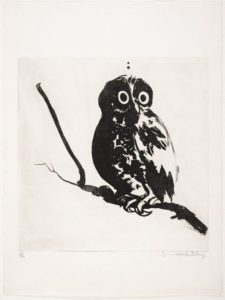
Startled (owl), 1984
sugarlift aquatint, printed in black ink on ivory wove paper
75.9 x 56.8 cm
by Brett Whiteley (1939-1992)
Idiosyncratic forms of visual art are commonplace and desirable. Developed over time, the individualist artist can lay claim to a style, although it may not be copyrighted or patentable. While uniform agreement on the meaning of words is appropriate for communication between humans, each artist is well advised to explore a unique visual language and develop it.
After that recent blog-radio interview, many artists asked how to go about speaking in their own tongues. Here are a few thoughts:
Don’t be afraid to fall back and take your own counsel. You are the only person you will have to live with significantly, and you may as well get to like and trust yourself.
Always be open and curious as to what you may be doing wrong. Little wrong things that you can get to like can send you on the track of something new or original.
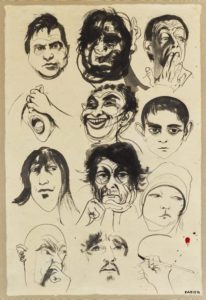
Head Studies, circa 1971
brush and black ink, wash, mounted on a scroll
175.8 x 83.0 cm
by Brett Whiteley
Wear a different cap when you sit back and contemplate your work. You’ll notice nuances, touches and subtle ideas that were not evident when you were in the middle of it.
Be prepared to take risks. You need to be able to get your brush around what you’re up to, but if you don’t swing out, you’ll never know what’s out there.
Be prepared to fall in love. Sometimes love creeps up on you and you hardly know what’s happening. Just like luvvy-duvvy talk between couples, so too does a unique language of creative love manifest between an artist and her work. Love smites you during the act of discovery and the exercise of process. As you do your work, you discover what you love to do. Thus blessed, you will need to do it again. Do it again and you can claim it as your own.
Best regards,
Robert,

Woman in Bath, 1963
(re-worked 1964)
oil, paper, fabric collage, graphite and tempera on plywood
183.1 x 218.7 cm
by Brett Whiteley
PS: “If a man does not keep pace with his companions, perhaps it is because he hears a different drummer. Let him step to the music which he hears, however measured or far away.” (Henry David Thoreau)
Esoterica: I’m laptopping you from a deep woods not far from my studio. Morning and evening, Barred owls, seldom seen in the tall cedars and firs, call to one another. Deep-throated or sometimes high-pitched, the story’s the same: “Who, who, who cooks for you?” This year there are three distinct voices — perhaps it’s a young one who joins in. Maybe I’m putting too much meaning into things, but the kid seems troubled, difficult, petulant, annoyed, spoiled, lazy. Sometimes the parents take a long time to respond. Speaking to them in Owlish, I advise the parents to migrate, but they are too stuck in their ways.
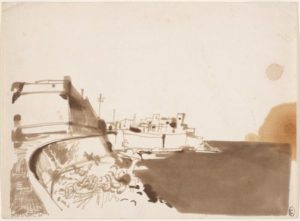
Coastal View (France), 1960
pen and brown ink, wash on ivory wove paper
27.8 x 37.8 cm
by Brett Whiteley
This letter was originally published as “In search of ideoglossia” on December 9, 2011.
The Letters: Vol. 1 and 2, narrated by Dave Genn, are available for download on Amazon, here. Proceeds of sales contribute to the production of The Painter’s Keys.
“Art is the thrilling spark that beats death – that’s all.” (Brett Whiteley)
Featured Workshop
Learn from the Master! The way to do accurate drawing with painterly approach. Join us for this 7 day retreat with 4 day workshop in magical settings of Mexican back country with one of the best instructors of drawing the human figure. From short pose gesture and anatomy studies, to long pose painterly approaches, students will learn step by step the drawing methods, human proportions, anatomy and much more. Live model with small class size will insure lots of personal attention.
Henry Yan has been teaching at Academy of Art University in San Francisco for more than twenty years. His book, “Henry Yan’s Figure Drawing – Techniques and Tips” published in 2006, has been widely used by art students and professional artists in the US and internationally.
Casa Buena Art Retreat is a calm and beautiful place to relax and explore your creative energy. Non painting partners welcome.
For more info check http://www.casabuenaartretreat.com/Retreat_HenryYan.htm
or contact Jane at janerom@shaw.ca
Featured Artist
I am a painter. I am delighted to be a painter.

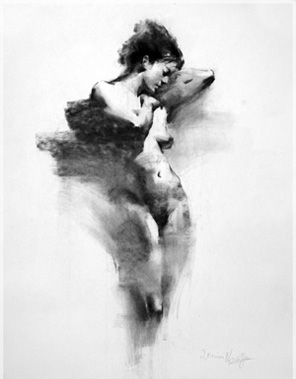
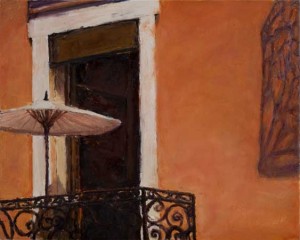



5 Comments
I have been drawing and painting all my life but I’ve really found my medium with face paint and body art. Sometimes, as when I’m painting a butterfly or superhero design on a kid’s face, it’s more craft level. It’s sweet and it’s fun, but I’m sure there are people who would dismiss it. I’m often asked “are you a real artist?” People tend not to take it seriously when it’s not on canvas.
But when I’m doing a body painting and trying to figure out the concept, the layout, and the colors, sometimes it is just so joyful. Contours of the body suggest design elements, and of course have their own unique challenges. When it’s going well I – for lack of a better phrase – sort of hear the paint “singing”, and I often talk to my materials, especially the paints and brushes, and I often hum. I talk to the models too, of course! But in general, I’m pretty quiet – the art seems to tap into a nonverbal part of me that makes talking a challenge when I’m painting.
The art is ephemeral – it’s all gone with a shower at the end of the day – but I like that aspect of the work. Fortunately I know some good photographers. I’m not a good photographer, myself :-D
Just keep painting. Someone once said that each painting is practice for the next one. A style or personal language is an evolving thing. The answers are in the commitment of doing. The more you practice, the more genuine and unique your statement.
SECOND REQUEST TO BE ADDED TO YOUR EMAIL LIST. WANT TO RECEIVE YOUR NEWSLETTERS
Jane, click box in lower right hand corner that says”Subscribe”.
“Love smites you during the act of discovery and the exercise of process. As you do your work, you discover what you love to do. Thus blessed, you will need to do it again. Do it again and you can claim it as your own.” This quote from Robert’s letter is meaningful to me. I get smitten each and every time I put my brushes to canvas and I do discover what I love to do: create….!!! Thank you dear Robert for your words of wisdom that rings true to me and that I believe.